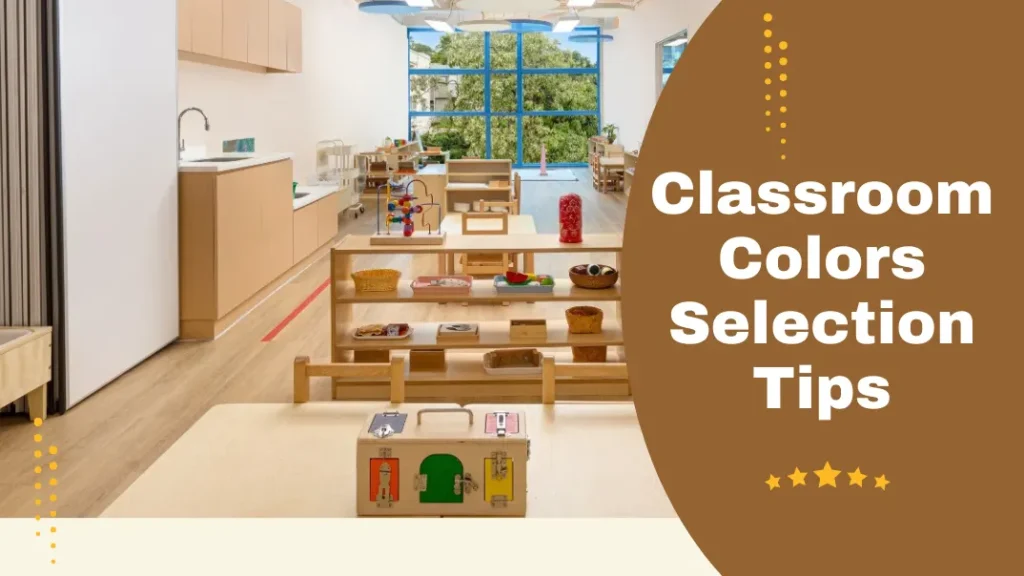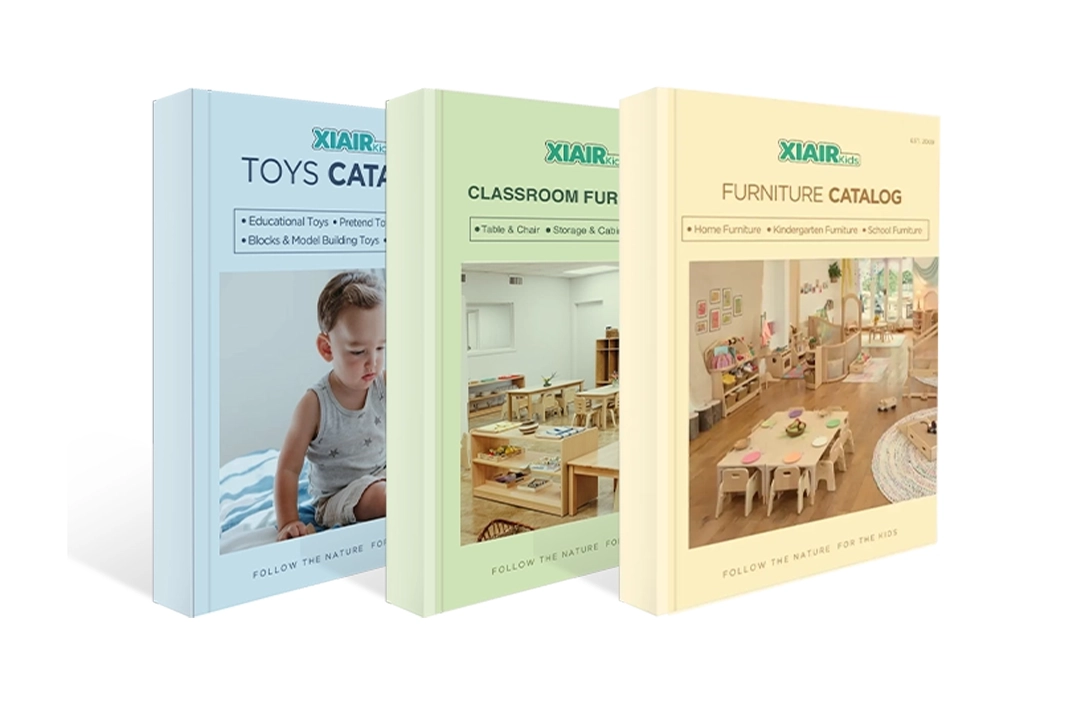적절한 교실 색상을 선택하는 것은 부담스러울 수 있습니다. 옵션과 요소가 너무 많기 때문에 길을 잃었다고 느끼기 쉽습니다. 하지만 선택한 색상은 학생들의 기분, 주의력, 학습 능력에 큰 영향을 미칠 수 있습니다. 어떻게 하면 생산적이고 자극적이며 편안한 학습 환경을 조성할 수 있는 색상을 선택할 수 있을까요?
교실 색상은 단순한 미적 선택이 아니라 학생들의 감정, 집중력, 전반적인 행동에 영향을 미칩니다. 다양한 색상의 영향을 이해함으로써 교사는 학습을 장려하고 창의력을 증진하며 정서적 웰빙을 증진하는 환경을 조성할 수 있습니다. 교실에 적합한 색상을 선택하면 보다 효과적이고 조화로운 학습 환경을 조성할 수 있습니다.
색상의 중요성, 색상 선택 시 고려해야 할 요소, 학습 효과를 높이는 데 가장 적합한 색상에 대해 설명합니다. 새 교실을 디자인하든 기존 교실을 리노베이션하든 이 가이드는 완벽한 팔레트를 선택하는 데 도움이 될 것입니다.
교실 색상의 중요성
교실의 색은 장식 그 이상의 의미를 가집니다. 교실 색상은 학생의 행동, 집중력, 감정 및 학습 결과에 영향을 미칠 수 있습니다. 연구에 따르면 다양한 색상이 집중력, 창의력, 전반적인 분위기에 영향을 미치는 것으로 나타났습니다. 예를 들어 파란색과 녹색 톤은 집중력을 높이는 차분한 교실 색상으로 널리 알려져 있으며, 주황색과 노란색 같은 따뜻한 색상은 에너지와 창의성을 불러일으킵니다.
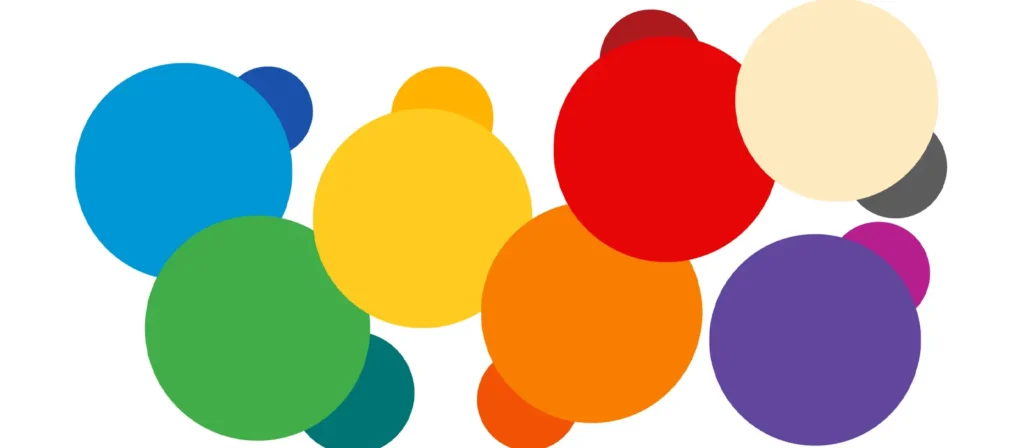
시각적으로 매력적이면서도 지나치게 자극적이지 않은 컬러풀한 교실은 학생들의 기분과 학습 성과를 향상시킬 수 있습니다. 교실의 색 구성표가 학생들이 편안하고 몰입할 수 있는 분위기를 조성하면 과제에 집중하고 긍정적으로 상호작용할 가능성이 높아집니다. 반면에 지나치게 어둡거나 강렬한 색상을 사용하면 스트레스 수준이 높아지고 생산성이 떨어질 수 있습니다.
적절한 교실 색 테마로 학습, 성장, 정서적 웰빙을 촉진하는 공간을 만들 수 있습니다. 다채로운 색상 통합 교실 장식 는 공간을 따뜻하게 만들어 학생들이 편안하고 몰입할 수 있도록 도와줍니다.
교실 색상을 선택할 때 고려해야 할 요소
최적의 교실 색 구성표를 선택하려면 색상 차트에서 색조를 선택하는 것 이상의 것이 필요합니다. 교실의 환경, 사용 목적, 학생의 고유한 요구 사항을 고려하는 것이 중요합니다. 다음은 고려해야 할 주요 요소입니다:
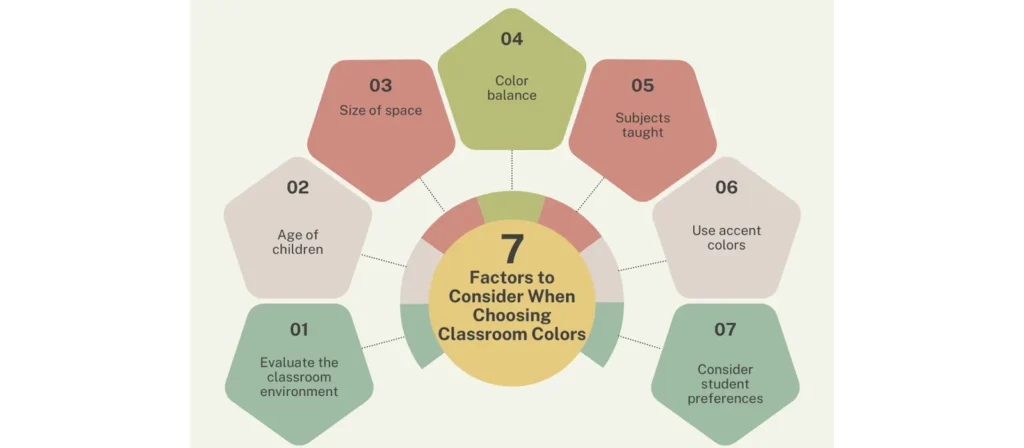
1. 교실 환경 평가하기
교실 색상을 선택할 때는 물리적 환경을 고려하세요. 강의실에 자연 채광이 많이 들어오는가요? 공간이 작거나 큰가요? 이미 특정 색상 팔레트가 있나요? 이러한 질문에 대한 답변은 공간에 가장 적합한 교실 색 구성표를 선택하는 데 도움이 됩니다. 예를 들어 자연 채광이 제한적인 교실은 부드러운 노란색이나 흰색과 같은 밝은 색상을 선택하면 공간을 더욱 개방적이고 환영하는 분위기로 만들 수 있습니다.
2. 어린이 연령
가르치는 연령대는 색상 선택에 중요한 역할을 합니다. 어린 학생들은 호기심과 에너지를 자극하는 원색을 테마로 한 활기차고 생동감 있는 색상의 교실이 도움이 되는 경우가 많습니다. 이에 비해 고학년 학생은 부드러운 파란색과 녹색처럼 집중력을 높여주는 차분한 교실 색상이 더 효과적입니다. 다채로운 교실 테마는 밝고 화려한 교실 장식이 아이들의 흥미를 유발하고 영감을 주는 유치원 교실에 적합합니다.
3. 공간 크기
교실 크기는 색상이 인식되는 방식에 영향을 줍니다. 큰 교실은 벽에 대담한 색상을 사용하거나 대형 포스터나 가구 액센트와 같은 화려한 교실 장식을 사용할 수 있습니다. 작은 교실은 파스텔 톤의 차분한 교실 색상과 같이 더 부드럽고 미묘한 색조를 사용하면 공간이 덜 좁아 보이는 효과를 얻을 수 있습니다.
꿈만 꾸지 말고, 직접 디자인하세요! 맞춤 가구에 대한 니즈를 함께 이야기 나눠요!
4. 색상 균형
교실 색상 조합을 디자인할 때는 균형이 중요합니다. 밝은 톤이 너무 많으면 학생들을 지나치게 자극할 수 있고, 중성적인 톤이 너무 많으면 공간이 칙칙해질 수 있습니다. 사려 깊은 균형 사용 중성 색상 교실 장식을 기본으로 하고 밝은 톤으로 포인트를 주어 학생들에게 부담을 주지 않으면서도 시각적으로 매력적인 공간을 연출합니다.
5. 가르치는 과목
일부 과목은 특정 교실 색상이 학습에 자연스럽게 어울립니다. 예를 들어, 미술 교실은 창의력을 자극하는 대담하고 역동적인 색상이 도움이 될 수 있습니다. 반대로 수학이나 과학 교실에서는 집중력과 논리적 사고를 장려하기 위해 녹색이나 파란색과 같은 차분한 교실 색상을 활용할 수 있습니다.
6. 강조 색상 사용
강조 색상은 독서 코너나 그룹 작업 공간과 같이 교실 내 다양한 공간을 구분하는 데 도움이 될 수 있습니다. 주황색과 노란색과 같은 밝은 색상을 전략적으로 사용하면 특정 영역을 강조할 수 있습니다.
7. 학생 선호도 고려
학생의 선호도도 중요합니다. 일부 학생은 특정 색상을 좋아하거나 싫어할 수 있으므로 교실 색상을 선택할 때 이를 고려하면 학생들이 편안하고 몰입할 수 있는 공간을 조성하는 데 도움이 될 수 있습니다.
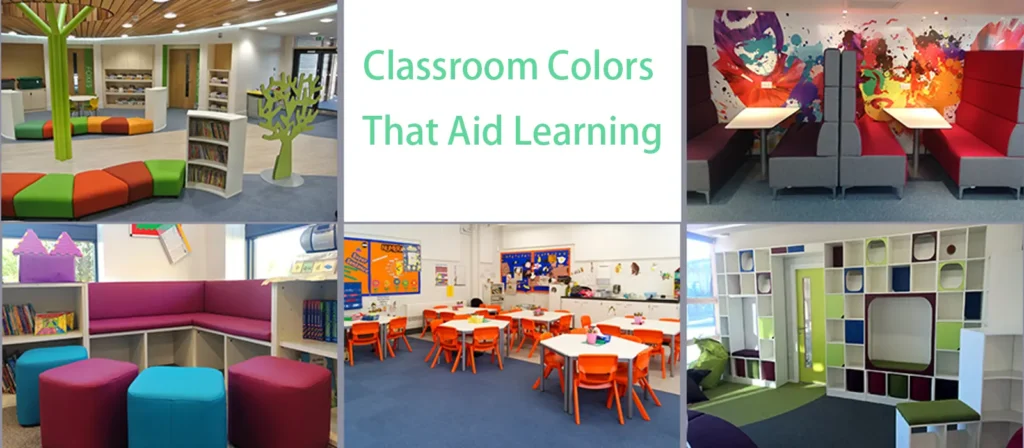
학습에 도움이 되는 교실 색상
색상마다 독특한 심리적 효과가 있기 때문에 특정 색조가 다른 색조보다 교실 색 구성표에 더 적합할 수 있습니다. 다음은 컬러풀한 교실에서 일반적으로 사용되는 몇 가지 색상과 이러한 색상이 학습에 도움이 되는 방법입니다:
- 오렌지
주황색은 활기차고 에너지가 넘치며 사회적 상호작용과 창의력을 증진하는 데 이상적입니다. 다음과 같은 공간에 적합합니다. 그룹 활동 가 발생할 수 있습니다. 하지만 주황색이 너무 많으면 부담스러울 수 있으므로 적당히만 사용하세요.
- 녹색
녹색은 차분하고 집중력을 높이는 데 도움이 됩니다. 녹색은 스트레스를 줄이고 눈을 편안하게 해주어 학습에 가장 적합한 교실 색상 중 하나이므로 학습 공간에 안성맞춤입니다.
- 빨간색
빨간색은 주의를 집중시키고 주의력을 높입니다. 빨간색이 너무 많으면 동요할 수 있지만, 활동적인 학습 공간에서 주의 집중을 유도하는 포인트 색상으로 효과적으로 사용할 수 있습니다.
- 파란색
파란색은 평온함을 촉진하고 집중력을 높여주므로 집중력이 중요한 조용한 공간에 가장 적합한 교실 색상 중 하나입니다. 진정 효과가 있어 스트레스를 줄이는 데 이상적입니다.
교실에서 차분한 색은 어떤 것이 있나요?
교실을 위한 차분한 색상은 독서 코너나 조용한 구역처럼 학생들이 휴식을 취하고 집중해야 하는 공간에 이상적입니다. 다음은 가장 효과적인 차분한 교실 색상 몇 가지입니다:
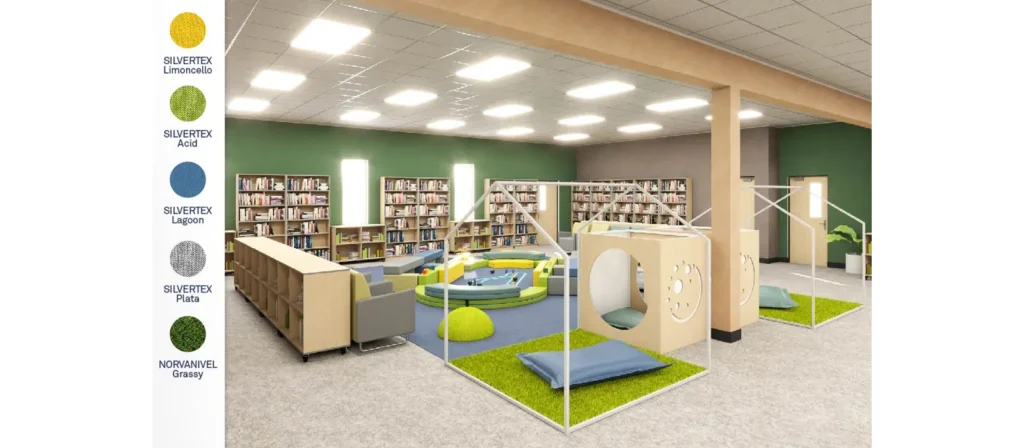
- 소프트 블루: 진정 효과로 잘 알려진 이 제품은 학생들이 평온함을 느끼고 불안을 줄이는 데 도움이 됩니다.
- 라벤더: 연한 보라색 톤은 고요한 분위기를 조성하고 창의력을 자극합니다.
- 연한 녹색: 녹색은 접지 효과가 있어 집중이 필요한 영역에 이상적입니다.
- 베이지: 평화롭고 숨겨진 배경을 제공하는 따뜻한 뉴트럴입니다.
- 파스텔: 파스텔 색상의 교실 테마는 가볍고 통풍이 잘되며 차분한 환경을 조성하는 데 효과적입니다.
교실 색상의 영향
다양한 교실 색상이 학생들에게 심리적으로 어떤 영향을 미치는지, 그리고 어떤 교실 공간이 가장 적합한지 알아보세요:
| 색상 | 심리적 영향 | 최상의 사용 |
|---|---|---|
| 파란색 | 진정, 집중력 및 집중력 향상 | 긴 학습 세션, 스트레스 감소 |
| 녹색 | 균형과 진정, 지속적인 집중에 이상적 | 과학, 독서 공간, 조용한 학습 공간 |
| 노란색 | 활동 구역, 스포츠 또는 인터랙티브 영역 | 예술 또는 브레인스토밍 영역 |
| 빨간색 | 깨끗하고 중립적인 디자인으로 선명도와 집중력을 높여줍니다. | 활력을 불어넣는 동기 부여 |
| 오렌지 | 따뜻하고 친근한 분위기, 사회적 교류 장려 | 그룹 활동, 공동 작업 공간 |
| 흰색 | 창의력과 상상력을 촉진하는 영감 | 일반 교실 벽, 유연한 공간 |
| 보라색 | 영감을 주고, 창의력과 상상력을 촉진합니다. | 미술 또는 디자인 교실 |
| 브라운 | 안정감과 편안함, 안정에 이상적인 접지 | 도서관 코너, 독서 공간 |
교실 가구 색상
교실 가구 색상은 매력적이고 편안한 학습 환경을 조성하는 데 핵심적인 요소입니다. 다음은 몇 가지 인기 있는 선택 사항입니다:
- 중립 가구: 중성적인 색상의 교실 장식과 가구는 방의 균형을 유지하여 벽이나 장식의 밝은 색상이 돋보일 수 있도록 도와줍니다. 흰색, 베이지색 또는 회색 톤은 차분하고 질서 정연한 분위기를 연출합니다.
- 교실용 컬러 쓰레기통: 교실 수납에 컬러 쓰레기통을 사용하면 재미있고 실용적인 요소를 더해 학생들이 정리 정돈을 할 수 있습니다. 밝은 색상의 쓰레기통은 실용적일 뿐만 아니라 공간을 압도하지 않으면서도 색감을 더할 수 있습니다.
- 밝은 색상의 가구: 밝은 가구는 특히 어린 교실에서 활기를 더합니다. 대담한 의자나 테이블은 학생들에게 활력을 불어넣을 수 있지만 과도한 자극을 방지하기 위해 중성적인 벽과 균형을 이루어야 합니다.
- 목재 가구: 천연 목재 톤으로 따뜻하고 편안한 느낌을 줍니다. 목재 교실 가구 는 다목적이며 파스텔 색상 교실 테마 및 대담한 교실 색상 디자인에 적합합니다.
당신에게 딱 맞는 교실을 클릭 한 번으로 만나보세요!
교실에 가장 적합한 세 가지 색상
보편적인 정답은 없지만, 이 세 가지 색상은 최고의 교실 색상으로 널리 알려져 있습니다:
- 파란색: 집중력과 차분함을 촉진하여 학생들이 집중해야 하는 영역에 이상적입니다.
- 녹색: 학습 공간과 차분한 교실 색상 테마에 적합한 균형 잡힌 진정 효과를 제공합니다.
- 노란색: 창의력과 낙관성을 향상시켜 그룹 작업 및 상호 작용이 장려되는 영역에 탁월합니다.
이러한 교실 색상 조합을 사용하고 악센트 톤과 균형을 맞추면 학생들의 정서적, 인지적 요구를 충족하는 다채로운 교실 테마를 만들 수 있습니다.
결론
결론적으로 교실 색상은 학생들의 행동, 감정, 학습에 큰 영향을 미칩니다. 교육자는 다양한 색상의 효과를 이해하고 일관된 교실 색 구성표 내에서 현명하게 사용함으로써 집중력, 창의력, 긍정적인 사회적 상호 작용을 향상시키는 환경을 조성할 수 있습니다. 올바른 교실 색채 디자인은 학생들의 웰빙을 지원하고 잠재력을 최대한 발휘할 수 있도록 돕는 미학적인 측면만 고려하는 것이 아닙니다.

